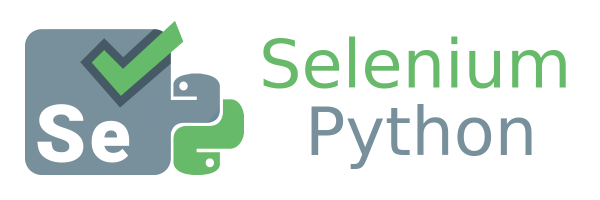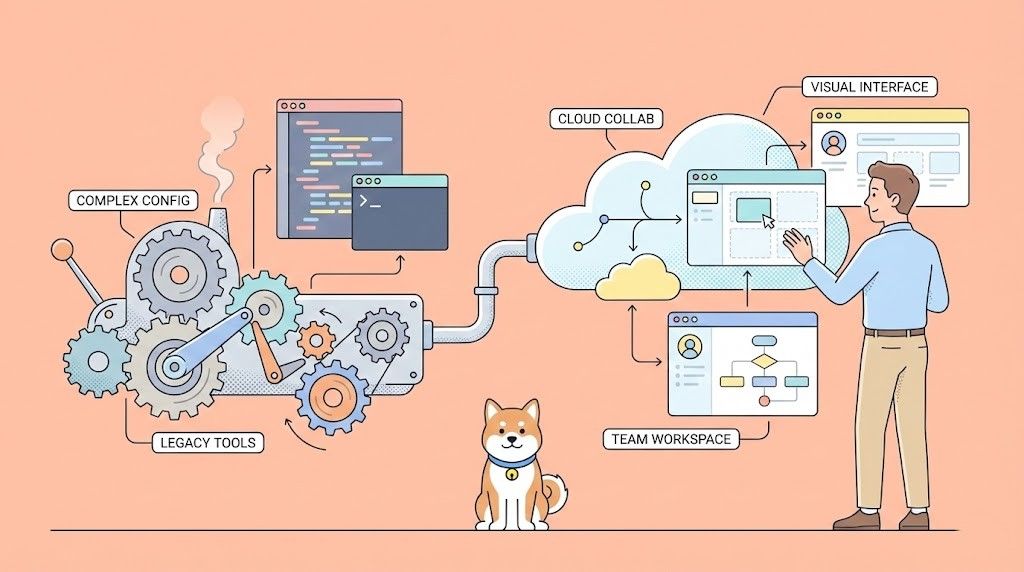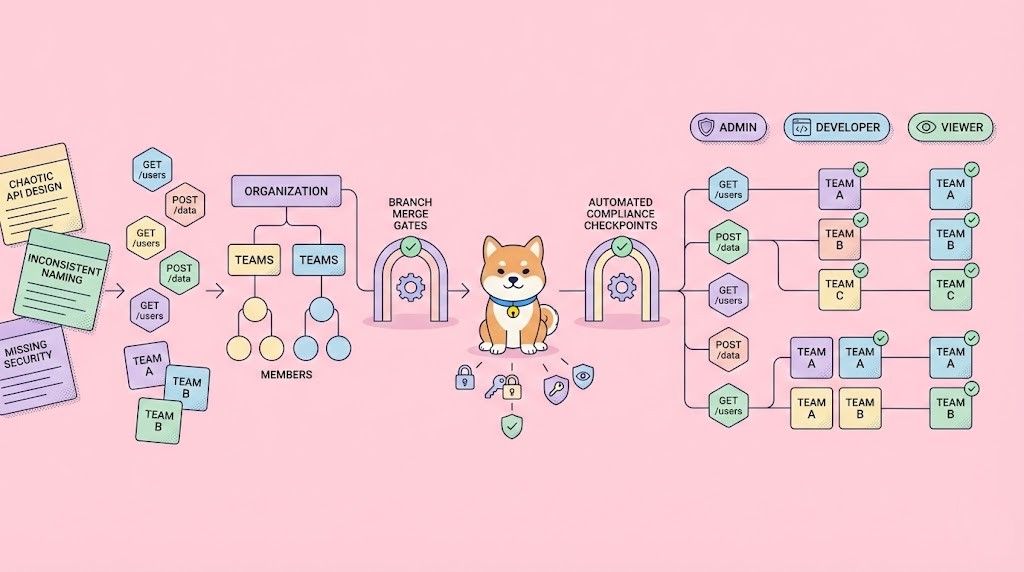As a beginner venturing into the world of test automation, one of the first decisions you'll face is choosing between Selenium 3 and Selenium 4. This choice can significantly impact your learning journey and the effectiveness of your automation efforts. In this article, we'll explore the key differences between Selenium 3 and 4, and provide guidance on which version is best suited for beginners.
What is Selenium?

Before diving into the comparison, let's briefly review what Selenium is and why it's important in the world of test automation.
Selenium is an open-source tool suite for automating web browsers. It allows testers and developers to write scripts that interact with web elements, simulate user actions, and verify expected behaviors across different browsers and platforms. Selenium has become the de facto standard for web application testing due to its flexibility, extensive language support, and large community.
Selenium 3 vs. Selenium 4: Key Differences
To make an informed decision, it's crucial to understand the main differences between Selenium 3 and Selenium 4:
W3C WebDriver Protocol
- Selenium 3: Uses a mix of JSON Wire Protocol and W3C WebDriver Protocol
- Selenium 4: Fully adopts the W3C WebDriver Protocol
Browser Support
- Selenium 3: Supports older browser versions
- Selenium 4: Better support for modern browsers and their latest versions
Relative Locators
- Selenium 3: Not available
- Selenium 4: Introduces relative locators for easier element location
Selenium Grid
- Selenium 3: Older Grid architecture
- Selenium 4: Completely revamped Grid with improved features
Chrome DevTools Protocol (CDP) Integration
- Selenium 3: Not available
- Selenium 4: Integrates CDP for advanced browser automation
Selenium IDE
- Selenium 3: Limited IDE capabilities
- Selenium 4: Enhanced Selenium IDE with improved features
Now that we've outlined the key differences, let's explore the pros and cons of starting with each version.
Starting with Selenium 3
Pros:
Stability: Selenium 3 is a mature and stable version with extensive documentation and community support.
Compatibility: It works well with older browser versions and existing test suites.
Learning Resources: There's an abundance of tutorials, courses, and books focused on Selenium 3.
Simpler Concepts: Beginners may find it easier to grasp the core concepts without the additional features of Selenium 4.
Cons:
Outdated Features: Some features in Selenium 3 are becoming obsolete.
Limited Modern Browser Support: It may struggle with the latest browser versions.
Future-proofing: Skills learned may need to be updated when transitioning to Selenium 4.
Starting with Selenium 4
Pros:
Latest Features: Access to the newest capabilities like relative locators and CDP integration.
Improved Browser Support: Better compatibility with modern browsers and their latest versions.
Enhanced Selenium Grid: More powerful and flexible distributed testing capabilities.
Future-proof Skills: Learning Selenium 4 prepares you for the future of web automation.
Cons:
Learning Curve: Some advanced features may be overwhelming for complete beginners.
Fewer Learning Resources: While growing, there are currently fewer tutorials and courses specifically tailored to Selenium 4.
Potential Instability: As a newer version, it may have some bugs or issues that are still being ironed out.
Factors to Consider
When deciding between Selenium 3 and 4, consider the following factors:
Your Learning Goals: Are you looking to quickly automate basic tests, or do you want to dive deep into advanced automation techniques?
Project Requirements: What are the specific needs of your current or future projects?
Time Constraints: How quickly do you need to become proficient in Selenium?
Available Resources: What learning materials and support are available to you?
Long-term Career Plans: Are you planning a long-term career in test automation?
Recommendation for Beginners
For most beginners, starting with Selenium 4 is the recommended approach. Here's why:
Future-proofing: Learning Selenium 4 ensures that your skills remain relevant for the foreseeable future.
Modern Features: You'll have access to the latest features and improvements, which can make your learning process more efficient and enjoyable.
Better Browser Compatibility: Selenium 4's improved support for modern browsers aligns better with real-world testing scenarios.
Smooth Transition: It's easier to start with Selenium 4 and potentially work with older versions if needed, rather than learning Selenium 3 and then having to update your knowledge.
Why You Might Consider Starting with Selenium 3
Despite Selenium 4’s shiny new features, there are still good reasons why a beginner might want to start with Selenium 3.
Mature and Stable: Selenium 3 has been around for a while, and many of the bugs have been ironed out. If you're looking for stability, especially in a production environment, Selenium 3 is a reliable choice.
Established Resources: There’s a wealth of tutorials, forums, and community support for Selenium 3. If you run into issues (which, let’s face it, is inevitable when you're learning something new), you'll find plenty of help online.
Legacy Projects: If you’re working with or contributing to an existing project, it might still be on Selenium 3. Starting with Selenium 3 ensures you're on the same page as the rest of the team.
Simpler for Small Projects: For small-scale projects, the enhancements in Selenium 4 might be overkill. Selenium 3 is perfectly capable of handling basic automation tasks.
However, while these points are valid, they may not outweigh the benefits of starting with Selenium 4. Let’s look at why.
Why Selenium 4 Might Be the Better Choice for Beginners
Selenium 4 isn’t just an upgrade—it’s a significant evolution of the tool. Here’s why you might want to start your journey with the latest version.
Future-Proofing: As a beginner, it’s wise to learn the latest technologies to future-proof your skills. Starting with Selenium 4 means you're learning the version that will be widely adopted moving forward.
Better Performance: Thanks to the W3C WebDriver protocol, Selenium 4 offers better performance and fewer compatibility issues. This can save you a lot of headaches, especially if you're just starting and don’t want to get bogged down by technical issues.
Easier to Learn: The new features like relative locators and enhanced documentation make Selenium 4 more user-friendly, especially for beginners. These tools simplify the process of locating elements and understanding the framework.
Integration with Modern Tools: Selenium 4’s support for Chrome DevTools Protocol opens up new possibilities for debugging and performance monitoring. If you're interested in advanced testing techniques, this is a huge advantage.
Growing Community: As more developers adopt Selenium 4, the community and resources will continue to grow. Starting now means you’ll be on the cutting edge, with access to the latest tools, guides, and support.
Real-World Scenarios: Selenium 3 vs. Selenium 4
Let’s take a look at some real-world scenarios to see how Selenium 3 and 4 stack up.
Cross-Browser Testing: Selenium 4’s W3C WebDriver protocol makes cross-browser testing more reliable. If you're testing across multiple browsers, Selenium 4 offers better stability.
Responsive Design Testing: Selenium 4’s DevTools Protocol integration allows you to simulate different devices and screen resolutions. This is invaluable for testing responsive designs.
Parallel Testing: If you're running tests in parallel, Selenium 4’s improved Grid makes it easier to set up and manage. For large projects, this can save a significant amount of time.
Legacy Systems: If you're working with older applications or systems that haven’t been updated, Selenium 3 might be more compatible. However, Selenium 4 is designed to work with modern web technologies, making it a better choice for new projects.
API Testing: While Selenium is primarily used for UI testing, it can also be integrated with tools like Apidog for API testing. Selenium 4’s DevTools Protocol offers enhanced capabilities for testing APIs, making it a more versatile choice.
Common Pitfalls for Beginners and How to Avoid Them
Starting with Selenium, whether it’s version 3 or 4, comes with its own set of challenges. Here are some common pitfalls and how to avoid them:
Overcomplicating Your Tests: It’s easy to get carried away with writing complex tests when you're starting out. Focus on mastering the basics before diving into advanced features.
Ignoring Best Practices: Make sure you're following best practices from the get-go. This includes things like using explicit waits instead of hard-coded sleep times and keeping your tests maintainable.
Not Testing Across Multiple Browsers: Always test your scripts across multiple browsers to catch compatibility issues early. Selenium 4 makes this easier with its W3C WebDriver protocol.
Forgetting About API Testing: Don’t forget that you can integrate API testing into your Selenium scripts. Tools like Apidog can help you create comprehensive test suites that cover both UI and API testing.
Getting Started with Selenium 4
If you've decided to start with Selenium 4, here's a step-by-step guide to get you started:
Set up your development environment:
- Install Java Development Kit (JDK)
- Choose and install an Integrated Development Environment (IDE) like Eclipse or IntelliJ IDEA
- Set up Maven for dependency management
Add Selenium WebDriver dependency:
- Add the following dependency to your
pom.xmlfile:
<dependency>
<groupId>org.seleniumhq.selenium</groupId>
<artifactId>selenium-java</artifactId>
<version>4.x.x</version>
</dependency>
Install browser drivers:
- Download and install the appropriate drivers for the browsers you want to automate (e.g., ChromeDriver for Google Chrome)
Write your first Selenium 4 test:
import org.openqa.selenium.WebDriver;
import org.openqa.selenium.chrome.ChromeDriver;
public class FirstSeleniumTest {
public static void main(String[] args) {
WebDriver driver = new ChromeDriver();
driver.get("https://www.example.com");
System.out.println("Page title: " + driver.getTitle());
driver.quit();
}
}
Explore Selenium 4 features:
Learn about relative locators:
WebElement emailInput = driver.findElement(By.id("email"));
WebElement passwordInput = driver.findElement(RelativeLocator.with(By.tagName("input")).below(emailInput));
Try out the new Selenium Grid:
GridOptions options = new GridOptions().setBrowserVersion("latest");
RemoteWebDriver driver = new RemoteWebDriver(new URL("http://localhost:4444"), options);
Practice and build projects:
- Start with simple automation tasks and gradually increase complexity
- Build a small test framework to organize your tests
- Explore integration with testing frameworks like TestNG or JUnit
Join the Selenium community:
- Participate in forums and discussion groups
- Contribute to open-source Selenium projects
- Attend webinars and conferences to stay updated
Enhancing API Development with Apidog
If you’re working with APIs in your application, Apidog is a tool you’ll definitely want to check out. Apidog is a powerful API testing and documentation tool that can streamline your development process.
What is Apidog?
Apidog is a comprehensive API development tool that helps you design, test, and document APIs. It provides an intuitive interface for creating API requests, validating responses, and generating documentation.
Key Features of Apidog
API Design: Easily design and manage your APIs with a user-friendly interface.
API Testing: Test your APIs with customizable requests and validate responses against expected results.
API Documentation: Automatically generate detailed documentation for your APIs, making it easier to share with your team and users.
Collaboration: Collaborate with your team in real-time, making API development more efficient and coordinated.
- Open Apidog and click on the "New Request" button to create a new request.

2. Select "GET" as the method of the request.

3. Enter the URL of the API endpoint

Then click on the “Send” button to send the request to the API.

As you can see, Apidog shows you the URL, parameters, headers, and body of the request, and the status, headers, and body of the response. You can also see the response time, size, and format of the request and response, and compare them with different web APIs.
Integrating Apidog with your project is straightforward. You can use Apidog to design and test your APIs, and then integrate them into your services.
Conclusion
While both Selenium 3 and 4 have their merits, beginners are generally better off starting with Selenium 4. It offers the latest features, better browser compatibility, and prepares you for the future of web automation. The learning curve might be slightly steeper, but the long-term benefits outweigh the initial challenges.
Remember that the key to mastering Selenium, regardless of the version, is consistent practice and hands-on experience. Start with simple scripts, gradually tackle more complex scenarios, and don't hesitate to experiment with different features.
As you progress in your Selenium journey, keep an eye on the official documentation and community resources. The field of test automation is constantly evolving, and staying updated will ensure that your skills remain sharp and relevant.
Whether you choose Selenium 3 or 4, the most important step is to start your learning journey. With dedication and practice, you'll soon be proficient in automating web applications and contributing to the quality assurance process in meaningful ways.



